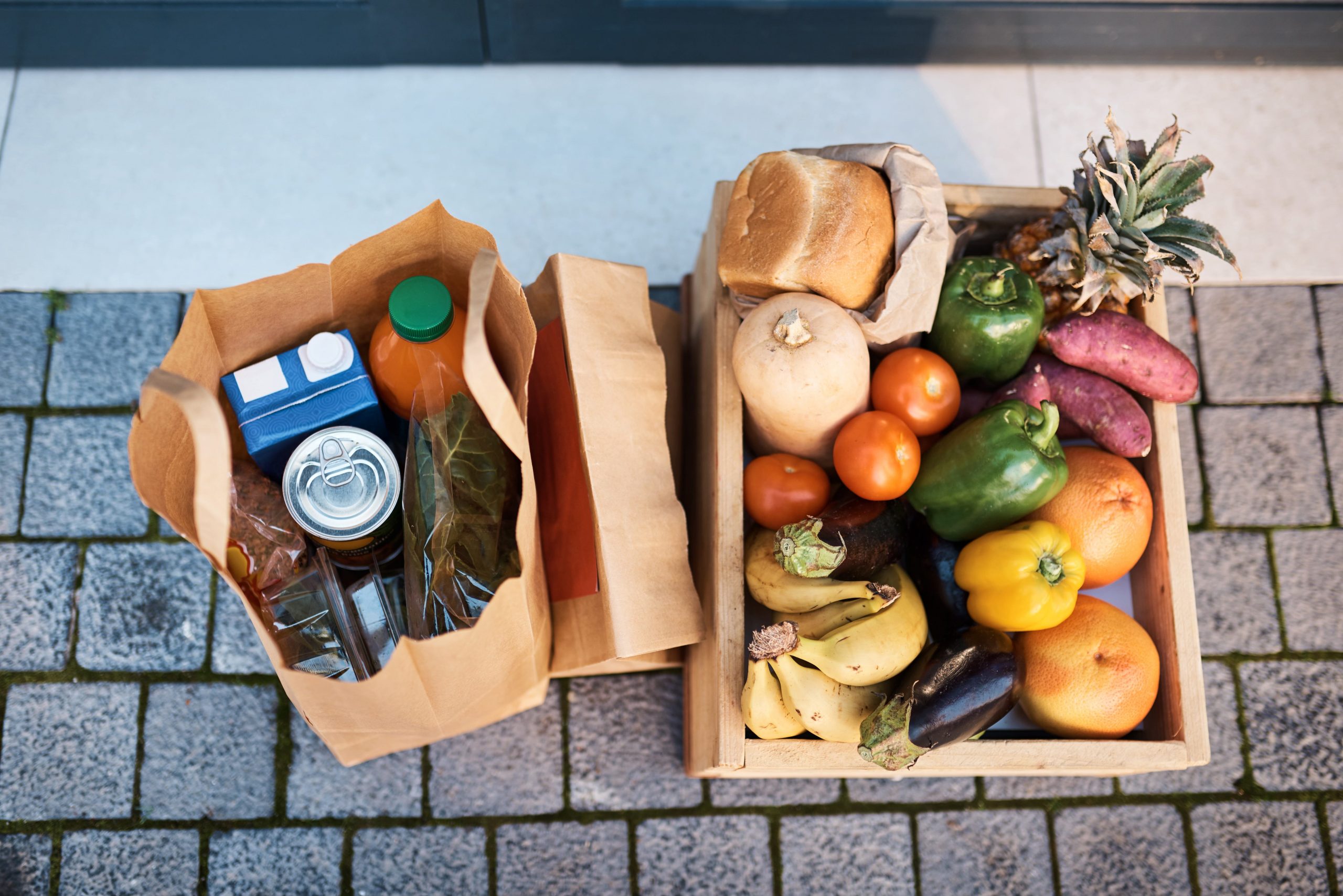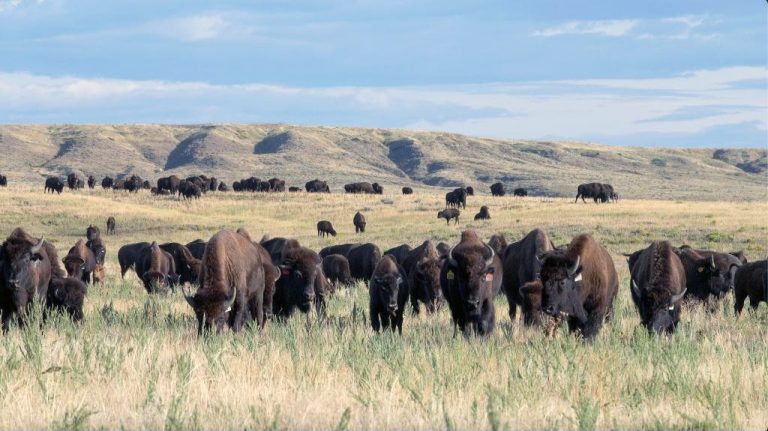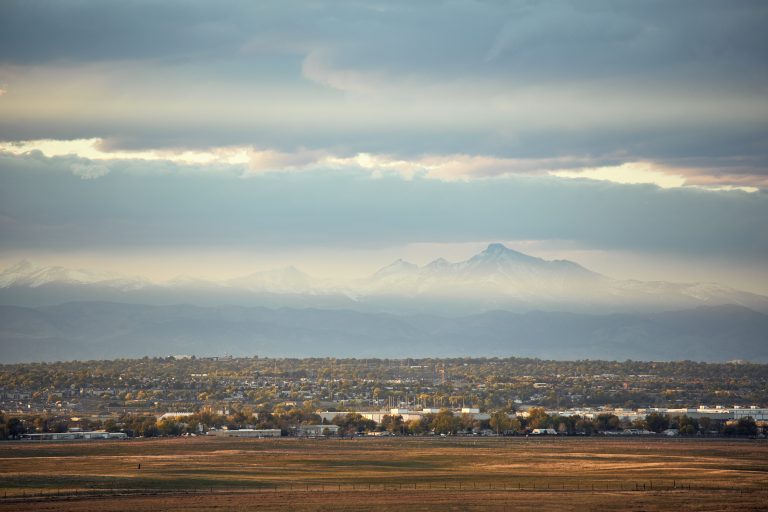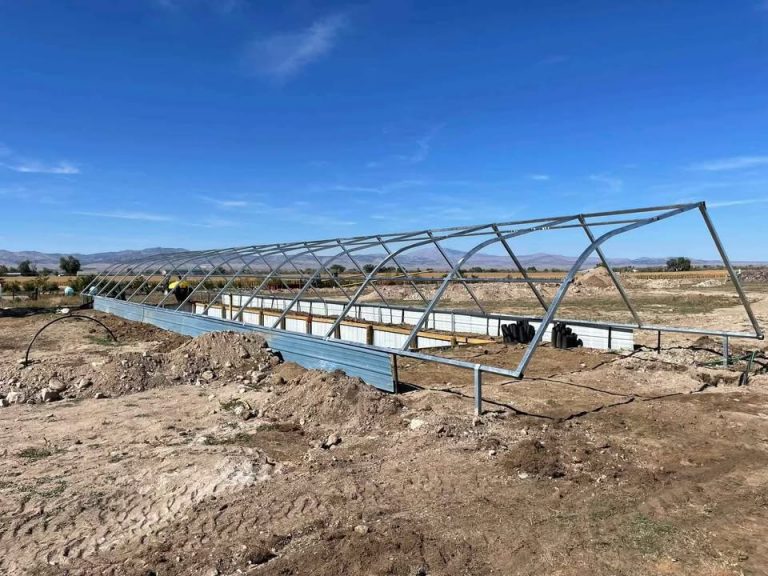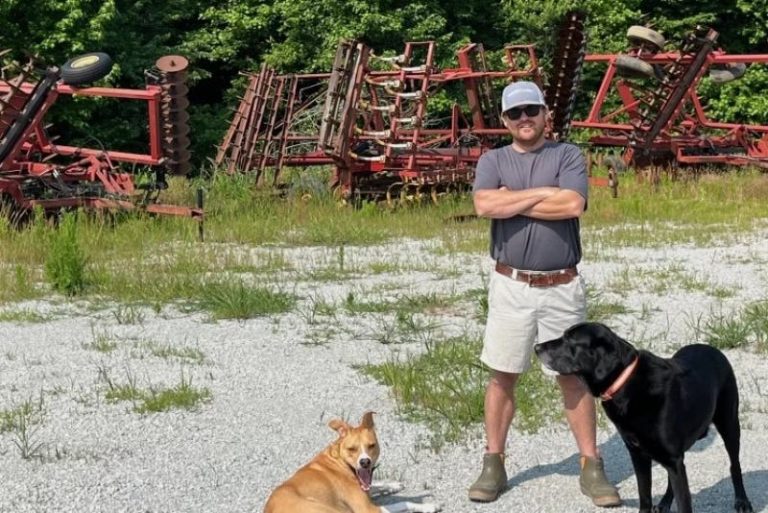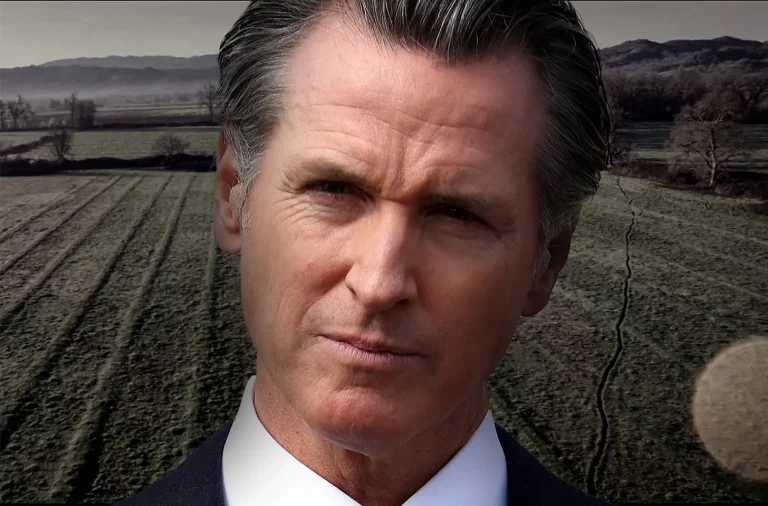Yanasa TV News
Why the Next Revolution in Protein Is Really Just a Power Grab—And What We Lose When We Trade Real Farms for Bioreactors
Food for the Few, Not the Many
Supermarket aisles overflowing with affordable meats, processed snacks, and exotic produce have become an emblem of modern abundance. On the surface, the industrial food system appears to be a triumph of technology and progress—feeding hundreds of millions and offering choices unthinkable to past generations. But behind the gloss of endless variety lies an uncomfortable truth: the modern food system has been engineered for the benefit of a shrinking few, not the nourishment or empowerment of the many.
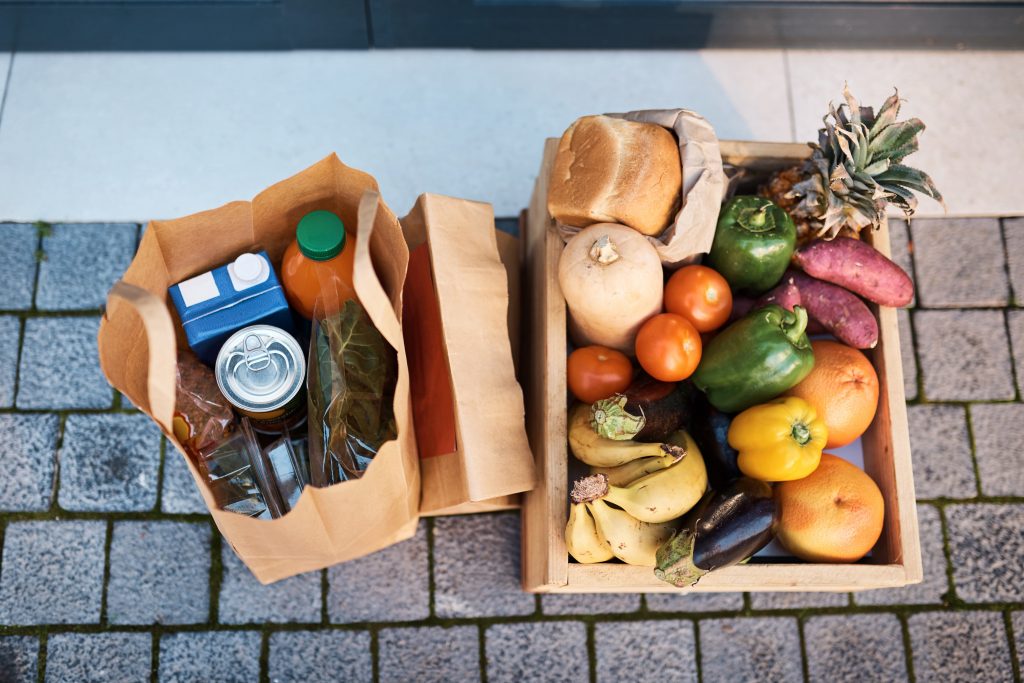
What was once a patchwork of family-owned farms, neighborhood butchers, and independent grocers has given way to a rigid hierarchy controlled by a handful of multinational corporations. These giants, from seed to shelf, now decide not just what food gets grown, but how it’s raised, processed, and distributed—leaving farmers, consumers, and entire communities with less and less say over what ends up on their plates. The shift isn’t just about scale; it’s about power. Instead of regional economies and food traditions shaped by people and place, we have distant boardrooms and algorithm-driven supply chains prioritizing shareholder returns over community well-being and food sovereignty.
This system, built atop the logic of consolidation and industrialization, has delivered abundance but also alarming costs—environmental devastation, the loss of rural livelihoods, rampant animal suffering, and growing public health crises tied to the very products it churns out. Now, as these problems become too obvious to ignore, the industry’s latest “solution”—lab-grown meat—promises to solve the ethical and environmental consequences of factory farming with yet another technological fix. But look closer, and you’ll see the same pattern repeating: more control, more secrecy, more power for corporate gatekeepers, and less agency for the rest of us.
Instead of moving toward a food system that heals the land, supports farmers, and gives consumers real choice, we are witnessing the next phase of corporate capture—one where both meat and meaning are manufactured in a lab, patent-protected, and distributed by the same interests that created the crisis in the first place. The supermarket shelves might be full, but true nourishment—of people, communities, and the planet—is becoming increasingly scarce.
This opinion is not just a warning about what we stand to lose if we accept industrial agriculture and lab-grown meat as our destiny—it’s a call to remember who should truly own, shape, and benefit from our food system. The time has come to reclaim food as a public good, not a corporate commodity. If we fail, we risk surrendering our health, our traditions, and our very sovereignty to a handful of boardrooms and bioreactors.
How the Family Farm Was Lost
The story of American agriculture is, at its core, the story of the family farm—a patchwork of small, diversified operations that formed the economic and cultural backbone of rural communities. For generations, these farms were more than businesses: they were ways of life, rooted in stewardship of the land, close relationships with neighbors, and a sense of responsibility to future generations. But over the last century, this tradition has been upended by relentless industrialization and consolidation, turning a decentralized, resilient food system into one controlled by a shrinking handful of powerful interests.
The seeds of this upheaval were planted with the promises of mechanization and chemical agriculture. In the wake of the Second World War, government policy, university research, and corporate innovation focused on maximizing yields through new machinery, synthetic fertilizers, hybrid seeds, and pesticides. While these changes brought impressive productivity gains, they also fueled a dangerous “get big or get out” mentality. The new model demanded ever-larger farms to afford the latest equipment and survive price competition—squeezing out smaller operations and favoring those who could scale up.
Over time, the countryside hollowed out. Family farms that once dotted the landscape were bought up, consolidated, or simply shuttered, as the pressures of debt, low commodity prices, and ever-tighter margins became overwhelming. According to the USDA, today less than 4% of U.S. farms account for the vast majority of agricultural output—a staggering shift from the days when millions of independent producers fed the nation. (USDA ERS, 2022) Where once there were thousands of local slaughterhouses and flour mills, now there are just a few multinational corporations controlling entire sectors. In the beef industry, four companies—Tyson Foods, JBS, Cargill, and National Beef—control over 80% of processing, while grain trading and seed markets are dominated by a similar handful of global giants. (Forbes, 2021)
This corporate consolidation is not just a matter of numbers—it has fundamentally changed the relationship between people, land, and food. Small farmers are increasingly relegated to the role of “contract growers,” bound by the dictates of processors and distributors, unable to set prices or truly control their destinies. Local economies have been drained as profits are siphoned away to distant headquarters. Rural communities, once vibrant and self-reliant, now struggle with depopulation, crumbling infrastructure, and a lack of opportunities for young people who might otherwise stay on the land.
Perhaps even more alarming is how this consolidation makes the entire food system more fragile and less responsive to the needs of eaters. When decisions about what gets planted, processed, and sold are made in distant boardrooms, there is little room for local adaptation, diversity, or innovation. The result is a monoculture—of crops, animals, and ideas—that is highly susceptible to disease outbreaks, supply chain shocks, and market manipulation. This top-down approach erodes food security and leaves both producers and consumers at the mercy of forces they cannot influence.
Even democracy itself suffers. As a few agribusinesses amass political and economic power, they wield disproportionate influence over regulations, subsidies, and research priorities, shaping public policy in their own interests rather than the public good. The voices of independent farmers and rural citizens are drowned out, replaced by industry lobbyists and corporate PR campaigns.
The loss of the family farm is thus more than a nostalgic lament—it is a warning about the dangers of surrendering control of our food to distant, unaccountable corporations. It is a call to restore diversity, resilience, and true democracy to the food system—before the last generation of independent farmers is gone for good.

The Cruelty and Cost of Factory Farms
The industrialization of animal agriculture has been justified for decades by the promise of cheap meat, eggs, and dairy. But behind this promise lies a grim reality. Factory farms—or Concentrated Animal Feeding Operations (CAFOs)—are not just efficient production facilities; they are a profound departure from the values of animal husbandry, rural stewardship, and community that once defined American farming.
On these factory farms, animals are reduced to mere units of production. Chickens, bred for unnaturally rapid growth, are packed by the tens of thousands into windowless, ammonia-filled sheds, each bird allotted less than a square foot of space for its entire life. Pigs, highly intelligent and social creatures, spend most of their days confined in “gestation crates”—metal enclosures barely larger than their bodies, where they can neither turn around nor engage in natural behaviors. Dairy cows, selected for maximum milk output, endure lives on concrete floors, hooked up to machines, often plagued by lameness, mastitis, and chronic stress. The welfare of these animals is routinely sacrificed in the name of efficiency and profit, despite mounting scientific evidence and public outcry demanding better.
But the harms of factory farming do not stop at the barn door. These operations generate mountains of manure and waste, far exceeding the absorptive capacity of local land. In places like North Carolina, lagoons of untreated hog waste routinely overflow or seep into waterways, contaminating rivers, wells, and entire ecosystems with nutrients, pathogens, antibiotics, and heavy metals. The result is not just environmental degradation—dead zones in rivers, toxic algal blooms, and loss of biodiversity—but direct harm to people. Rural communities downwind or downstream of CAFOs suffer increased rates of asthma, respiratory illness, and even higher risks of certain cancers. The stench and pollution drive down property values, erode quality of life, and disproportionately impact low-income and minority neighborhoods who are least able to fight back. (EPA, 2023) (The Guardian, 2018)
The consequences for consumers are also grave. To keep animals alive in crowded, stressful, and unsanitary conditions, factory farms rely heavily on routine antibiotics and, in many cases, growth hormones. Over two-thirds of all medically important antibiotics sold in the U.S. are administered to livestock, not people. (FDA, 2022) This misuse is a major driver of antibiotic-resistant “superbugs,” posing a public health crisis that experts warn could set back modern medicine by decades. Growth-promoting hormones, banned in many countries but still used in the U.S., raise additional questions about long-term health effects, particularly for children and vulnerable populations. Meanwhile, the centralized nature of processing and distribution means that a single contamination event can trigger nationwide outbreaks and recalls—E. coli in lettuce, salmonella in eggs—putting millions at risk.
The impacts on rural America have been devastating. Factory farms, with their massive scale, have driven countless independent producers out of business, eroding the economic base of rural communities and concentrating profits in the hands of distant corporations. Where small, diversified farms once provided steady work and stable populations, CAFOs require far fewer workers, and the jobs that remain are among the most dangerous and lowest paid in the agricultural sector. Entire towns have been hollowed out as people leave in search of better opportunities, schools and main streets shutter, and local democracy weakens under the influence of corporate interests.
Perhaps most fundamentally, factory farming has changed our relationship with food and the land. Instead of fostering respect, stewardship, and a sense of interdependence, the industrial model encourages detachment, ignorance, and a willingness to turn a blind eye to suffering. By treating animals, workers, and rural communities as expendable, factory farms undermine the moral and social fabric of agriculture itself.
The “cheap food” promised by factory farms is, in truth, an illusion. The real costs are simply shifted—from the grocery bill to the environment, public health, rural economies, and the ethical conscience of our society. Until we confront these costs honestly, and demand a food system that reflects our values as well as our appetites, the crisis at the heart of industrial animal agriculture will only deepen.
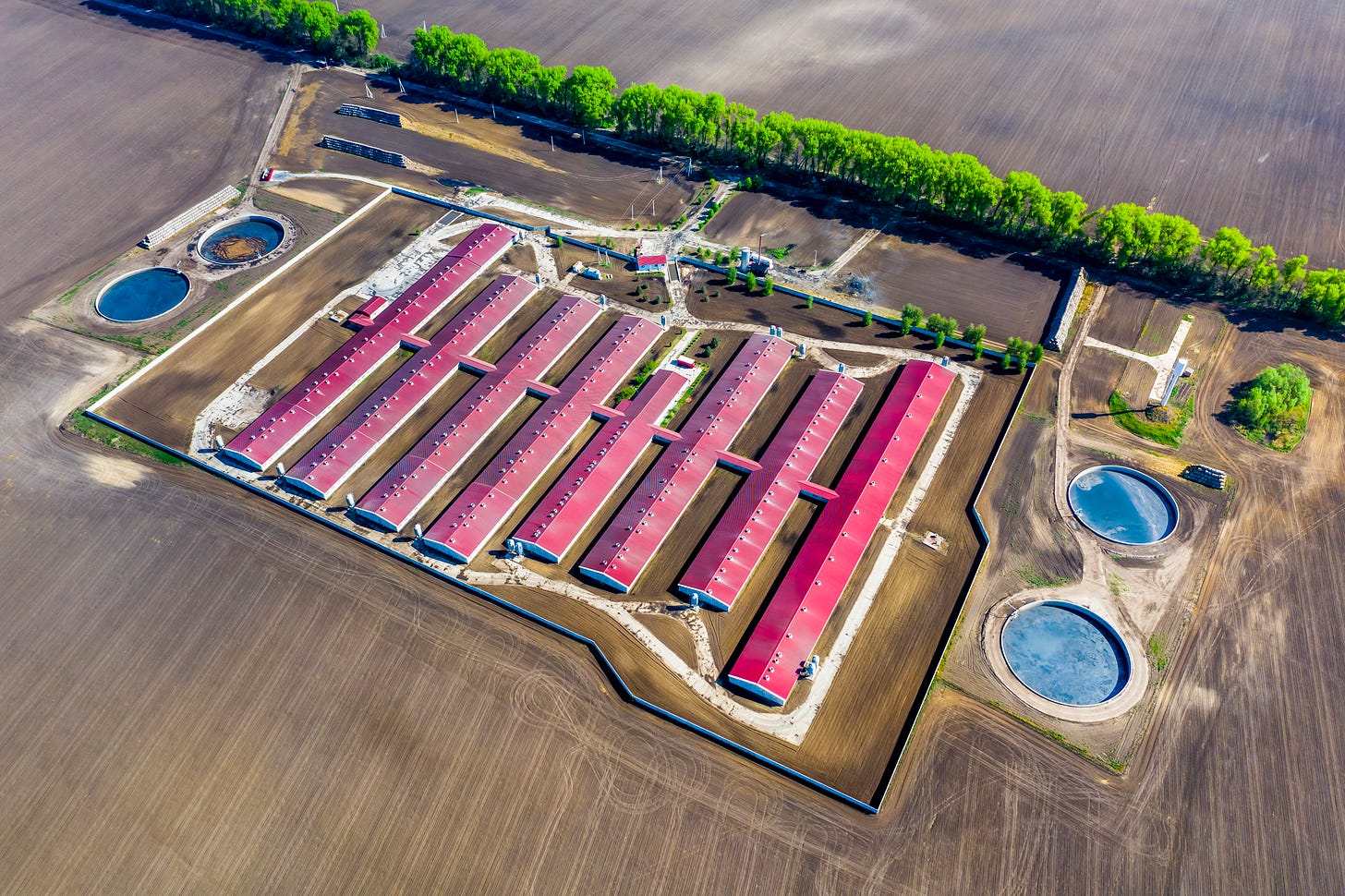
The Hidden Dangers of Lab-Grown Meat
Lab-grown meat has been relentlessly marketed as the next ethical and environmental breakthrough—a magic bullet poised to fix the catastrophic consequences of factory farming. Yet when we look past the tech industry hype, what emerges is a troubling vision of food production: one that deepens corporate consolidation, erases rural livelihoods, and places humanity’s most fundamental need—nutrition—firmly in the hands of a handful of patent-holding conglomerates.
At first glance, the appeal of lab-grown meat seems obvious. Proponents claim it will end animal suffering, shrink agriculture’s environmental footprint, and deliver safe, clean protein to a growing population. But in practice, the beneficiaries of this so-called revolution are not farmers, animals, or ordinary eaters—they are the same venture capitalists, Silicon Valley startups, and global food multinationals that already dominate the industrial food chain.
Lab-grown meat is not a democratizing technology. Unlike a pasture, a barn, or even a local butcher shop, a bioreactor is a closed, proprietary system. The intellectual property—the cell lines, growth media, bioreactor design, and proprietary “recipes”—are all controlled by a handful of tech firms and food giants, shielded by armies of patent lawyers. This means local farmers and communities, already cut out by CAFOs and corporate packers, have even less power or participation in the new food economy. Instead of building food sovereignty, lab meat accelerates the transformation of nourishment into an algorithm-driven, high-tech commodity—one where food “production” is inaccessible to all but the world’s largest and wealthiest players.
This centralization introduces new risks. With meat grown in just a few centralized, high-security labs or urban production sites, our protein supply becomes vulnerable to single points of failure: cyberattacks, supply chain interruptions, equipment malfunction, or bioreactor contamination could disrupt distribution for entire regions or even nations. Unlike decentralized real-world farms—resilient to weather, disease, and economic shifts—a handful of “food factories” means fewer safety nets and more catastrophic shocks.
Furthermore, the green credentials of lab-grown meat are far less certain than its advocates claim. Real-world production still requires enormous energy inputs for sterile, temperature-controlled environments, not to mention a global supply chain for specialized growth media, nutrients, and equipment. If these factories are powered by fossil fuels, or if their materials are sourced from extractive industries, the climate benefits all but evaporate. The environmental footprint becomes just another shell game—pollution and emissions are outsourced to the electricity grid and industrial manufacturers rather than eliminated.
Then there are the health and transparency questions. While advocates promise “clean meat,” the truth is that no one knows the long-term health impacts of regularly consuming lab-grown tissues, especially those produced with artificial scaffolds, chemical additives, or genetically engineered growth factors. Consumers are being asked to trust companies and regulators who, time and again, have prioritized profit and secrecy over full disclosure. When patents and proprietary processes replace traditional animal husbandry, food safety oversight grows murky, and the public loses the ability to truly know what’s on their plate.
Finally, we cannot ignore the ethical implications. A food system that divorces production from land, farmer, and animal severs our connection to nature and community. Eating becomes transactional—a technological product rather than an agricultural act. The very idea of “lab-grown meat” is not just a technological shift, but a philosophical rupture: it signals a society willing to give up agency, culture, and stewardship in exchange for corporate promises of safety and efficiency. Is this truly progress, or a surrender of our most fundamental rights?

The Assault on Food Sovereignty
The rise of lab-grown meat, like the earlier expansion of industrial agriculture, poses an existential threat to food sovereignty—the right of peoples and communities to define their own agricultural policies, sustain their traditions, and ensure control over how and what they eat.
Patents and proprietary technology are at the heart of this threat. With every new bioreactor or engineered cell line, food production becomes more abstract, more dependent on legal exclusivity, and less accessible to ordinary people. Local food traditions, agricultural knowledge, and genetic diversity are sidelined in favor of standardized, centrally controlled products. The ability to save seeds, breed animals, or adapt food production to local climate and culture is undermined by a model that prioritizes corporate intellectual property above all else.
The consequences for rural communities are profound. Farmers—once the stewards of land, water, and livestock—are being reduced to mere contractors, factory workers, or, increasingly, irrelevant bystanders. Lab-grown meat and hyper-industrial food systems shift wealth and power from the countryside to city headquarters and global finance. The economic and cultural vibrancy of rural America, already battered by decades of farm consolidation and CAFO expansion, faces yet another existential blow. Fewer opportunities for farm ownership and entrepreneurship mean depopulation, loss of local institutions, and eroded civic life.
Consumers, too, become more dependent and less empowered. The illusion of choice expands, but real agency contracts. Instead of sourcing food from neighbors, farmers’ markets, or regional processors, people rely on international supply chains and corporate intermediaries—often with little transparency or recourse when problems arise. True food security is replaced by a fragile dependence on “just-in-time” distribution and a handful of providers.
Perhaps most troubling, the centralization and commodification of food undermine democracy itself. When just a few companies control the food supply, their influence over policy, regulation, and even cultural attitudes grows unchecked. Public interest is subjugated to shareholder returns and marketing campaigns. Grassroots movements for better food—local, ethical, culturally meaningful—are sidelined by a narrative of technological inevitability. The basic right to decide what we eat, how it is produced, and who benefits from its production is quietly erased.
In the end, the assault on food sovereignty is an assault on the autonomy, dignity, and resilience of people and communities everywhere. As we stand at the precipice of a new era—one driven by lab-grown meat and digital agriculture—the most urgent question is not what we can do in a lab, but what kind of food system, and what kind of society, we truly want to build.
Regenerative, Decentralized, Democratic
The solution to our broken food system will not be found in the very forces—corporate consolidation, secrecy, and technological abstraction—that broke it in the first place. Instead, the real path forward is rooted in the oldest, most time-tested principles of agriculture: respect for land, animals, and community; local stewardship; and the right of people to shape their own destinies. This path is embodied by regenerative agriculture, food sovereignty movements, and a new generation of consumers demanding accountability, transparency, and real connection to their food.
Regenerative agriculture isn’t just a buzzword, but a holistic philosophy and set of practices that seek to heal, rather than exploit, the land. It draws upon traditional ecological knowledge and modern science alike: no-till farming, cover cropping, rotational grazing, silvopasture, and integrated crop-livestock systems all work to restore soil fertility, sequester carbon, and foster biodiversity. Regenerative ranchers and farmers build resilience against floods, droughts, and climate shocks not by relying on chemicals or patented seeds, but by working in concert with natural cycles. Their farms become not just sources of food, but oases of wildlife, carbon sinks, and anchors for rural economies.
Decentralization is equally vital. By rebuilding regional food hubs, farmers’ markets, co-ops, and small processing facilities, communities can keep food dollars circulating locally, create meaningful jobs, and preserve the cultural diversity that industrial agriculture erases. This empowers small and mid-sized farmers to innovate and sustain their land for future generations—rather than being forced to “get big or get out.” Transparent, short supply chains also mean safer food, more responsive markets, and greater adaptability in the face of crises—whether pandemics, war, or weather.
Democracy in food—food sovereignty—is not a fringe idea, but an urgent necessity. It means that eaters and producers together set the rules.

